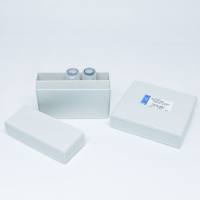Localization of Neurotrophin Proteins Within the Central Nervous System by Immunohistochemistry
互联网
互联网
相关产品推荐

ELAVL2 HUB/ELAVL2 HUB蛋白Recombinant Human ELAV-like protein 2 (ELAVL2)重组蛋白ELAV-like neuronal protein 1;Hu-antigen B ;HuB;Nervous system-specific RNA-binding protein Hel-N1蛋白
¥1344

Recombinant-Mycoplasma-pneumoniae-Oligopeptide-transport-system-permease-protein-oppCoppCOligopeptide transport system permease protein oppC
¥12124

Recombinant-Drosophila-melanogaster-CAAX-prenyl-protease-2SrasCAAX prenyl protease 2 EC= 3.4.22.- Alternative name(s): Farnesylated proteins-converting enzyme 2; FACE-2 Prenyl protein-specific endoprotease 2 Protein severas
¥11466

TCEANC2/TCEANC2蛋白Recombinant Human Transcription elongation factor A N-terminal and central domain-containing protein 2 (TCEANC2)重组蛋白TCEANC2; C1orf83; Transcription elongation factor A N-terminal and central domain-containing protein 2蛋白
¥1344

ELAVL2抗体ELAVL2兔多抗抗体Nervous system-specific RNA-binding protein Hel-N1 antibody抗体ELAVL2 Antibody抗体
¥440

